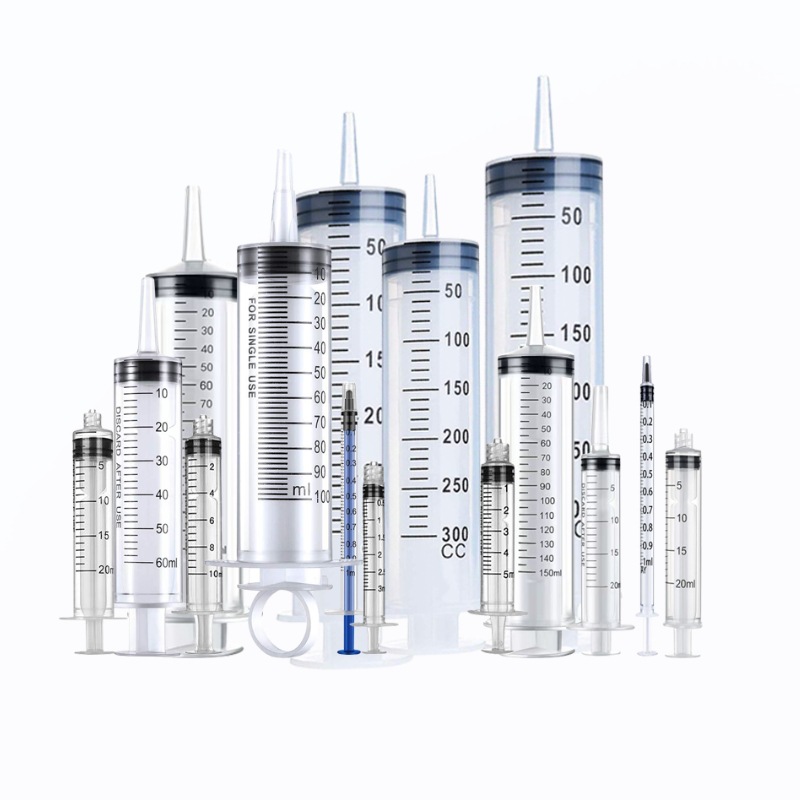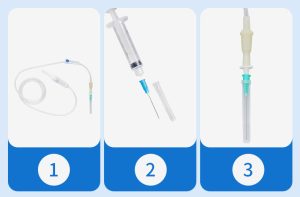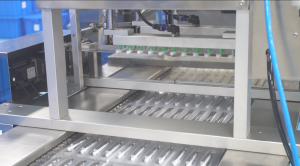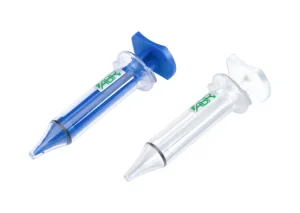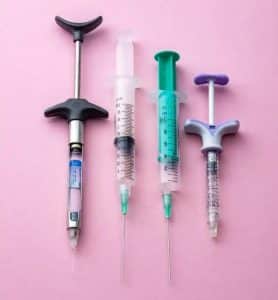Special Considerations for Different Materials
Syringes are one of the most important tools in modern healthcare. Whether you’re a diabetic managing insulin at home, a parent giving medicine to a child, or simply curious about medical equipment, understanding the different types of syringes can help you feel more confident and informed. This guide breaks down everything you need to know about syringes in simple, everyday language.
What Is a Syringe?
A syringe is a simple medical device used to inject fluids into the body or withdraw fluids from it. Think of it as a precisely calibrated tube with a plunger—like a very accurate water gun, but designed for medical purposes.
Basic Parts of a Syringe
Every syringe has three main components:
The Barrel – This is the hollow tube that holds the medication or fluid. It’s usually made of clear plastic or glass so you can see what’s inside. The barrel has measurement markings (called graduations) printed on the side, similar to a measuring cup in your kitchen.
The Plunger – This is the rod that slides up and down inside the barrel. When you pull it back, it draws liquid into the syringe. When you push it forward, it pushes the liquid out.
The Tip – This is the opening at the front of the barrel where the needle attaches or where liquid comes out. Different syringes have different types of tips designed for specific purposes.
Understanding Syringe Sizes
Syringes are measured by how much liquid they can hold, typically in milliliters (mL) or cubic centimeters (cc). One milliliter equals one cubic centimeter, so 1 mL = 1 cc.
Common Syringe Sizes
1 mL Syringes – The smallest commonly used syringes, perfect for precise, small doses. These are what diabetics use daily for insulin injections. The tiny size makes them less intimidating and allows for very accurate measurements.
3 mL Syringes – Medium-sized syringes often used for vaccinations like flu shots. They’re large enough to hold a full vaccine dose but still manageable and comfortable to use.
5 mL Syringes – Larger syringes frequently used for injecting medication directly into muscles (intramuscular injections). The extra capacity makes them suitable for larger doses.
10 mL Syringes – These bigger syringes have clear, easy-to-read markings and are popular with healthcare professionals for administering larger volumes of medication or for drawing blood.
20 mL and larger – Extra-large syringes used for specialized purposes like flushing catheters, irrigation, or tube feeding.
Types of Syringe Tips
The tip of a syringe—where it connects to a needle or other device—comes in several designs. Each type serves a specific purpose.
Luer Lock Tip
This tip has threads (like a screw) that allow you to twist and lock the needle securely in place. Imagine how you screw a bottle cap on—it’s the same principle.
When to use it: Any situation where the needle absolutely cannot come loose, such as when administering medication through an IV line or when using high pressure. The secure connection prevents dangerous leaks or accidental needle detachment.
Luer Slip Tip
This tip is smooth without threads. The needle simply slides on and stays in place through friction, like pushing a straw into a drink lid.
When to use it: Regular injections where security isn’t as critical, or when you need to quickly change needles. It’s faster and easier to attach than a Luer lock, making it popular for routine medical procedures.
Catheter Tip
This tip is longer and tapered (gradually narrowing to a point) without a needle. It looks somewhat like the tip of a glue bottle.
When to use it: Flushing urinary catheters, irrigating wounds, or administering medication through feeding tubes. The long, smooth tip fits securely into tubing and ports without needing a sharp needle.
Eccentric Tip
This unusual tip is positioned off-center rather than directly in the middle of the barrel.
When to use it: When you need to get very close to the skin or reach awkward angles, such as for wound irrigation or certain veterinary procedures. The off-center design allows the tip to lie almost flat against a surface.
Types of Syringes by Purpose
Different medical situations require different types of syringes. Here are the main categories:
1. Standard Hypodermic Syringes
These are the classic syringes most people picture—a clear barrel with a plunger and a needle. “Hypodermic” simply means “under the skin.”
Uses: The workhorse of medical syringes, used for giving shots, drawing blood, administering medications through various routes (into muscles, under the skin, into veins), and countless other medical procedures.
Available sizes: From 1 mL up to 60 mL, with corresponding needle sizes to match the purpose.
2. Insulin Syringes
These specialized syringes are designed specifically for people with diabetes who need to inject insulin daily.
Special features:
- Very small and thin (usually 1 mL capacity)
- Marked in “units” rather than milliliters because insulin is measured in units
- Comes with an ultra-fine, short needle (often just 6-8mm long) to minimize pain
- Usually has an orange cap for easy identification
- Needles are typically 29-31 gauge (very thin)
Why they’re special: Using the correct insulin syringe is critical for accurate dosing. A regular syringe marked in milliliters could lead to dangerous dosing errors. Insulin syringes make it impossible to give the wrong amount accidentally.
3. Tuberculin Syringes
Named after their original use in tuberculosis testing, these are precision instruments.
Special features:
- Usually 1 mL capacity
- Very fine measurement marks (graduations) showing tenths and even hundredths of a milliliter
- Come with a long, thin needle attached
- Exceptionally accurate for tiny doses
Uses: TB skin tests, allergy testing, administering very small doses of powerful medications, especially in pediatrics where precision is crucial.
4. Oral Syringes
These syringes have no needle at all and are designed to deliver liquid medication directly into the mouth.
Special features:
- Usually purple in color so they’re never confused with injection syringes
- Have a special tip that can’t attach to a needle (preventing dangerous mistakes)
- Come in sizes from 1 mL to 10 mL
- Have clear, easy-to-read markings
Uses: Giving liquid medicine to children or anyone who can’t swallow pills, administering precise doses of liquid medications, delivering medicine through feeding tubes. They’re much more accurate than measuring spoons and help mask bad-tasting medicine better than cups.
5. Safety Syringes
These are modern syringes designed to prevent accidental needle-stick injuries, which can transmit serious diseases.
Safety features:
- A protective sheath that automatically covers the needle after use, or
- A mechanism that retracts the needle back into the barrel after injection
Why they matter: Healthcare workers accidentally stick themselves with used needles thousands of times each year. Safety syringes dramatically reduce this risk, protecting both medical professionals and patients.
6. Prefilled Syringes
These come from the manufacturer already loaded with a specific medication.
Advantages:
- No need to draw up medication from a vial
- Reduced risk of contamination
- Guaranteed correct dose
- Faster to use in emergency situations
Common uses: Vaccines, emergency medications like epinephrine, blood thinners, and other frequently-used drugs.
7. Auto-Disable Syringes
These clever devices can only be used once—they automatically break or lock after a single injection.
Why they exist: In developing countries and high-risk settings, reusing syringes spreads deadly diseases like HIV and hepatitis. Auto-disable syringes make reuse physically impossible, protecting public health.
8. Enteral Syringes
These specialized syringes have a unique ENFit® tip designed exclusively for tube feeding.
Special features:
- Usually purple in color
- The ENFit® tip only fits enteral (feeding tube) equipment
- Cannot accidentally connect to IV lines or other equipment
Why they’re important: In the past, tragic accidents occurred when tube feeding formula was accidentally connected to an IV line and pumped directly into the bloodstream. The unique ENFit® connection makes these fatal errors physically impossible.
9. Regional Anesthesia Syringes
These specialized syringes are used for spinal anesthesia, epidurals, and nerve blocks.
Special features:
- Yellow plunger for easy identification
- Special NRFit® tip that only connects to neuraxial (spine and nerve) equipment
- Cannot accidentally connect to IV lines or other devices
Critical safety: Accidentally injecting the wrong medication into the spine can cause paralysis or death. The unique NRFit® connection system prevents these catastrophic errors.
Understanding Needle Sizes
Needles are measured in two ways:
Gauge (Thickness)
The gauge number tells you how thick the needle is. Here’s the confusing part: the bigger the number, the thinner the needle.
- 18-20 gauge – Thick needles used for drawing blood or giving thick fluids
- 21-23 gauge – Medium needles for intramuscular injections (like vaccines)
- 25-27 gauge – Thin needles for subcutaneous injections (under the skin)
- 29-31 gauge – Ultra-thin needles for insulin and other delicate injections
Think of it like this: imagine you’re measuring wire through increasingly smaller holes. The 30th hole would be much smaller than the 20th hole—hence, 30 gauge is thinner than 20 gauge.
Length
Needle length is measured in inches or millimeters. The length you need depends on:
- Where you’re injecting – Muscle injections need longer needles (1-1.5 inches) to reach deep muscle tissue. Subcutaneous injections under the skin need shorter needles (0.5 inches).
- Patient size – Larger or more muscular patients may need longer needles to reach muscle tissue, while smaller or thinner patients need shorter needles.
- The procedure – Some procedures require very specific needle lengths for proper technique.
Special Considerations for Different Materials
Plastic vs. Glass Syringes
Plastic syringes:
- Most common today
- Inexpensive and disposable
- Cannot be sterilized and reused
- Pre-lubricated for smooth plunger movement
- Safe for most medications
Glass syringes:
- More expensive
- Can be sterilized and reused
- More environmentally friendly
- Preferred for certain chemicals that react with plastic
- Used in laboratory and research settings
- Require careful matching of barrel and plunger
Safety and Proper Use
Universal Safety Rules
Always use a new, sterile syringe – Never reuse or share syringes. Each syringe should be used exactly once and then properly disposed of.
Check the measurements carefully – Make sure you’re reading the markings correctly. The numbers typically start at 0 at the bottom and increase as you go up.
Use the right syringe for the job – Using the wrong type of syringe can lead to serious errors. For example, never use a regular syringe to measure insulin.
Dispose of properly – Used syringes should go in a puncture-proof “sharps container,” never in regular trash where someone could get stuck.
Check for air bubbles – Before injecting medication, hold the syringe with the needle pointing up, tap gently to bring bubbles to the top, then push the plunger slightly to expel air. Air bubbles in medication going into your bloodstream can be dangerous.
When to Seek Professional Help
While many people successfully use syringes at home (like diabetics giving themselves insulin), you should always:
- Receive proper training before using syringes yourself
- Follow your healthcare provider’s specific instructions
- Ask questions if anything is unclear
- Contact your doctor if you experience pain, swelling, redness, or other problems after an injection
Recent Innovations
Medical technology continues to improve syringe safety and ease of use:
Needle-free injectors – These devices use high-pressure air to push medication through the skin without a needle. While more expensive, they eliminate needle-stick injuries and needle phobia.
Insulin pens – These look like writing pens and contain insulin cartridges. They’re easier to use than traditional syringes and more discreet for taking injections in public.
Smart syringes – Some new syringes can connect to smartphones to track injections, doses, and timing—helpful for people managing complex medication schedules.
Color-coding systems – Modern hospitals increasingly use color-coded syringes (purple for oral, yellow for epidural, etc.) to prevent dangerous medication errors.
Conclusion
Understanding syringes doesn’t require a medical degree. At their core, they’re simple tools designed to safely and accurately deliver or withdraw fluids. The variety of types and sizes exists to match the incredible diversity of medical needs—from tiny insulin doses measured in fractions of a milliliter to large volumes for tube feeding.
Whether you’re using syringes at home, receiving an injection at the doctor’s office, or simply curious about medical equipment, knowing the basics helps you:
- Feel more confident and less anxious about medical procedures
- Understand why healthcare providers choose specific equipment
- Use syringes safely if you need to administer medication at home
- Communicate better with healthcare professionals
- Recognize potential problems or errors
Modern syringes represent over 150 years of medical innovation focused on making healthcare safer, more accurate, and less painful. From the color-coded tips that prevent fatal errors to the ultra-fine needles that make injections nearly painless, every design feature serves an important purpose.
If you ever have questions about the specific syringe or needle being used for your care, don’t hesitate to ask your healthcare provider. They can explain exactly why they chose that particular type and how it benefits your treatment. Being an informed patient leads to better healthcare outcomes and greater peace of mind.

